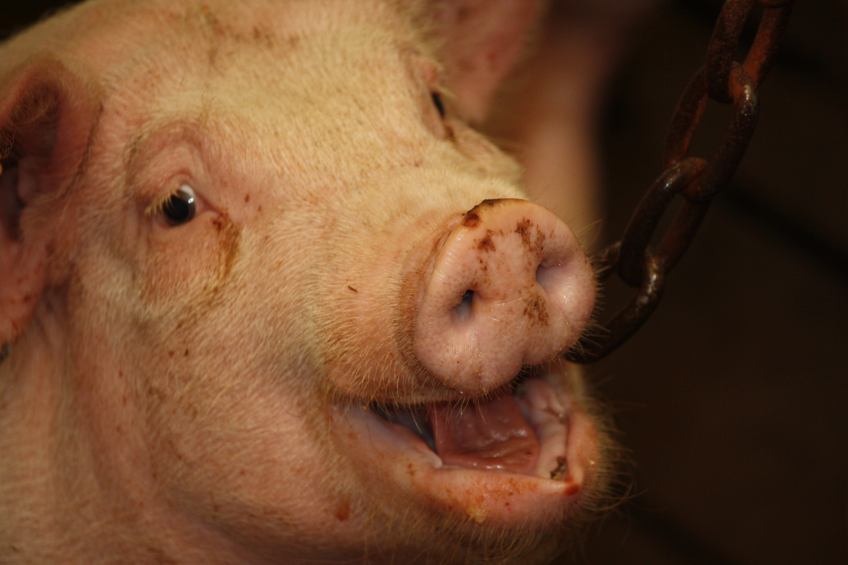Effect of pig pen mates included in breeding programmes

Information about pigs’ pen mates, advanced statistical models and genomic methods are some of the tools that researchers will use in a research project that aims to improve pig welfare and reduce their environmental impact.
Pigs in a pen affect each other. The group effect will therefore be included in breeding programmes with the aid of new breeding techniques.
A collaboration between Aarhus University and the Danish Pig Research Centre uses a multipronged approach in the efforts to improve pig behaviour. The purpose is to breed pigs that are less inclined to bite tails and that utilise the feed more efficiently. One of the approaches is a ground-breaking combination of sophisticated statistical models, indicator traits and genomic information about the pig’s pen mates.
A number of benefits
Results from the project will not only improve pig welfare as a result of less tail-biting, but will also be beneficial for the environment. A more efficient use of feed will result in reduced emissions of nutrients and CO2 to the environment.
“We expect to see a reduction in emissions of 335 tonnes of nitrogen, 56 tonnes of phosphorus and 14.5 tonnes of CO2 for the entire production of finishers, which is based on a production of 19.0 million finishers in 2013,” says Senior Researcher Ole Fredslund Christensen from the Center for Quantitative Genetics and Genomics in the Department of Molecular Biology, Aarhus University.
The farmer’s economy will also benefit from the project results. Pigs with a better feed use efficiency cost less to rear for slaughter and will therefore increase the farmer’s profits. If pigs are less prone to bite tails, this reduces the need to cut their tails. This will mean less work for the farmer and less pain for the pigs.
“We expect with the advances in breeding to increase feed use efficiency by 0.01 feed units for every 1 kg weight gained and to increase the growth rate by 1 g per pig per day. We also expect to reduce tail biting by 0.25 percentage points per year,” says Ole Fredslund Christensen.
New methods for complex traits
Both feed efficiency and social behaviour are complex traits to include in breeding programmes, since the properties are difficult to measure. The scientists will therefore include entirely new method combinations. By combining new methods for processing group information with genomic information, the scientists expect to be able to use their combined potential to increase genetic progress for these traits.
The group information will be used in two ways that are complementary. Firstly, data on feed consumption at group level will be used, which is a cost-effective way of improving the certainty in the breeding value assessments. Secondly, they will use the observations on pen mates to assess the pigs’ social breeding values.
“Pigs kept in pens will be influenced by the other pigs. This means that individual measurements of different characteristics are influenced by the pen mates, for example via the social hierarchy, competition for feed and mutual help. The new methods for handling group information mean we can improve our breeding efforts for feed use efficiency while behaviour can become part of the Danish pig breeding programme,” say the scientists behind the project.
Source: Aarhus University











